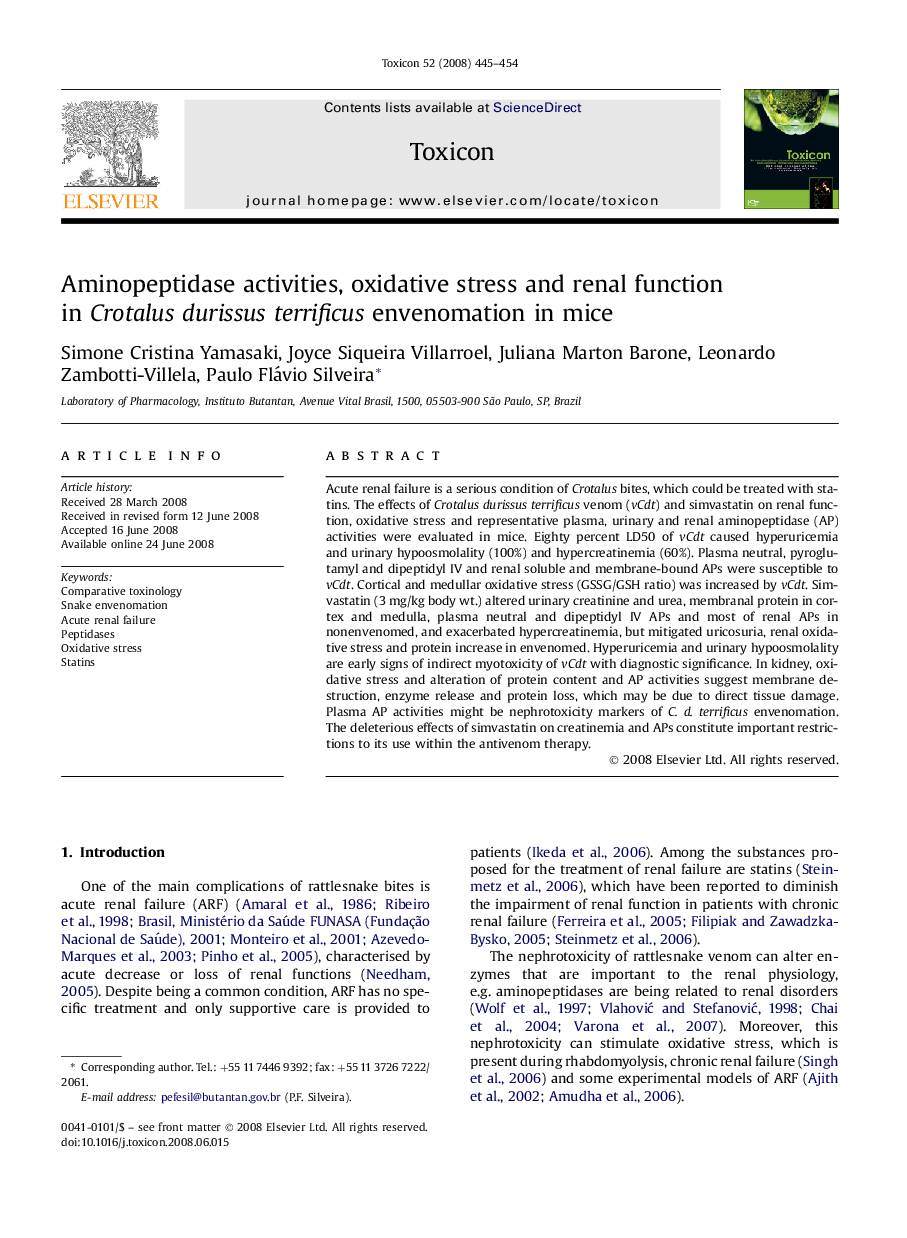| Article ID | Journal | Published Year | Pages | File Type |
|---|---|---|---|---|
| 2066536 | Toxicon | 2008 | 10 Pages |
Acute renal failure is a serious condition of Crotalus bites, which could be treated with statins. The effects of Crotalus durissus terrificus venom (vCdt) and simvastatin on renal function, oxidative stress and representative plasma, urinary and renal aminopeptidase (AP) activities were evaluated in mice. Eighty percent LD50 of vCdt caused hyperuricemia and urinary hypoosmolality (100%) and hypercreatinemia (60%). Plasma neutral, pyroglutamyl and dipeptidyl IV and renal soluble and membrane-bound APs were susceptible to vCdt. Cortical and medullar oxidative stress (GSSG/GSH ratio) was increased by vCdt. Simvastatin (3 mg/kg body wt.) altered urinary creatinine and urea, membranal protein in cortex and medulla, plasma neutral and dipeptidyl IV APs and most of renal APs in nonenvenomed, and exacerbated hypercreatinemia, but mitigated uricosuria, renal oxidative stress and protein increase in envenomed. Hyperuricemia and urinary hypoosmolality are early signs of indirect myotoxicity of vCdt with diagnostic significance. In kidney, oxidative stress and alteration of protein content and AP activities suggest membrane destruction, enzyme release and protein loss, which may be due to direct tissue damage. Plasma AP activities might be nephrotoxicity markers of C. d. terrificus envenomation. The deleterious effects of simvastatin on creatinemia and APs constitute important restrictions to its use within the antivenom therapy.
